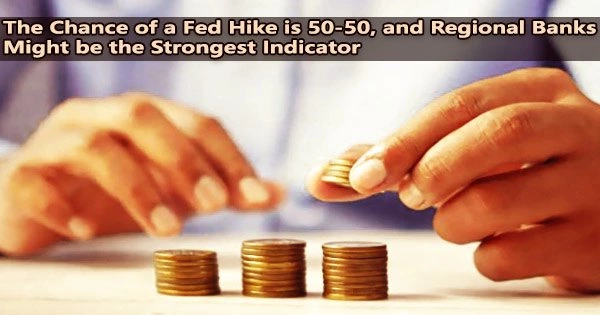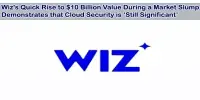The markets have once again changed their minds about what they believe the Federal Reserve will do in regards to interest rates next week.
Further banking upheaval broke this morning, and Wall Street equities began substantially lower. Nevertheless, traders changed their price to suggest that the Fed may hold the line when it meets on March 21–22.
CME Group data from Wednesday morning show that the likelihood of no rate increase has increased to 65%. Trading was volatile, though, and the latest moves suggested nearly a 50-50 split between no rate hike and a 0.25 percentage point move. For most of Tuesday, markets indicated a strong likelihood of an increase.
Chairman Jerome Powell and his fellow Fed policymakers will resolve the question over raising rates by watching macroeconomic reports that continue to flow in, as well as data from regional banks and their share prices that could provide larger clues about the health of the financial sector.
Smaller banks have been under intense pressure in recent days, following the closures of Silicon Valley Bank and Signature Bank, the second and third-largest failures in U.S. history. The SPDR Regional Bank ETF fell another 1.5% on Wednesday and is down more than 23% over the past five trading days.
The Bank Term Funding Program was introduced by the central bank in a stunning move Sunday evening. This will enable banks to exchange top-notch collateral for loans in order to maintain operations.
Share prices of harmed banks could reflect inflows to show how well the Fed’s strategy is performing to keep money flowing and sustain sector confidence.
The strong likelihood of continued rapid core PPI disinflation is at the heart of our relatively optimistic take on core [personal consumption expenditures] inflation and, ultimately. Markets don’t pay much attention to the PPI, but the Fed does.
Ian Shepherdson
Central bank officials also will get data in coming days to see how active banks are in using the facility.
If banks are using the BTFP to a large extent, that could indicate significant liquidity issues and thus serve as a deterrent to raising rates. The last public report on that data will come Thursday, though the Fed will be able to monitor the program right up until its two-day meeting starts Tuesday.
The wagers on which way the Fed ultimately will go followed a rocky morning on Wall Street. Stocks were sharply lower in early trading, with the Dow Jones Industrial Average down more than 500 points.
News that Credit Suisse might need a bailout broke just as worries about the soundness of the banking sector were beginning to fade. Once a significant Saudi investor declared it would not provide additional capital due to regulatory concerns, Switzerland’s second-largest bank suffered.
The slump came even as economic data seemed to lessen the urgency around controlling inflation.
The producer price index, a measure of wholesale pipeline prices, unexpectedly dropped 0.1% in February, according to the Labor Department. While markets don’t often pay much attention to the PPI, the Fed considers it a leading indicator on inflation pressures.
On an annual basis, the PPI gain dropped to 4.6%, a big slide from the 5.7% reading in January that itself was revised lower. The PPI peaked at a rate of 11.6% in March 2022; the February reading was the lowest going back to March 2021. Excluding food and energy, the core PPI was flat on the month and up 4.4% year over year, down from 5% in January.
“The strong likelihood of continued rapid core PPI disinflation is at the heart of our relatively optimistic take on core [personal consumption expenditures] inflation and, ultimately, Fed policy,” wrote Ian Shepherdson, chief economist at Pantheon Macroeconomics. “Markets don’t pay much attention to the PPI, but the Fed does.”
The PPI data coupled with a relatively tame consumer price index report Tuesday. Markets last week were pricing in a potential half-point rate hike this month, but quickly pulled back.
















